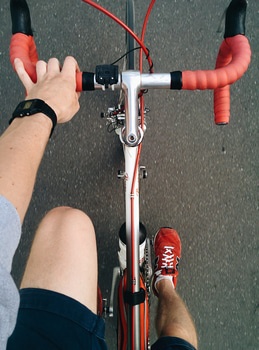Cyclists Deserve Safety On U.S. Roadways

A car pulls up to an intersection, the driver looks both ways then proceeds into the intersection. Seemingly out of nowhere, a cyclist clips the front of the car. The cyclist is thrown off the bike and over the hood of the car. He skids to a stop on the pavement on the other side of the vehicle bloody and bruised.
This scenario is a figurative example of one of the unacceptably high number of bicycle-related accidents that happen on U.S. roadways.
Many people ride their bicycles along U.S. roads for many different reasons. Some ride as form of transportation between their home and work, others ride as a form of leisure or even a form of exercise. All of these individuals that share the road with motor vehicles deserve to do so in a safe manner.
However, often times motorists did not take cyclist safety into consideration. According to the Pedestrian and Bicycle Information Center an estimated 50,000 cyclist accidents were reported in 2014 alone. The Pedestrian and Bicycle Information Center went on to explain that 726 of these accidents resulted in cyclist fatalities.
A significant number of these accidents could be reduced if cyclists and motorists worked together to create a safer environment on the road. The Centers for Disease Control and Prevention suggest that cyclist do their best to increase their visibility. To increase visibility they recommend that riders wear fluorescent or reflective clothing and add a type of lighting to their bicycle. The recommended lighting includes a white light in the front of the bicycle and a red light in the rear.
This increase in visibility makes cyclists more visible to motorists. If both the motorists and the cyclist are aware of each other’s presence then both can work to keep each other safe.
Motorists can also do their fair share to keep cyclists safe when sharing the roadways. Laws exist in most U.S. states that require motor vehicles to give cyclists at least three feet of clearance when passing. The S.D. Codified Laws state that vehicles provide three feet of clearance when traveling under 35 mph, and six feet when travelling faster than 35 mph in S.D. This clearance gives both the motorist and the cyclist enough space to pass without endangering either party. The distance between the two also provides a safe space in case the cyclist or motorist has an accident or swerves slightly.
Many motorists do not know that safe passing laws exist and many cyclists do not think of their visibility when going out for a ride. With knowledge of state laws and by following recommended safety measures cyclists and motorists can work together to improve cyclist safety on U.S. roadways.

